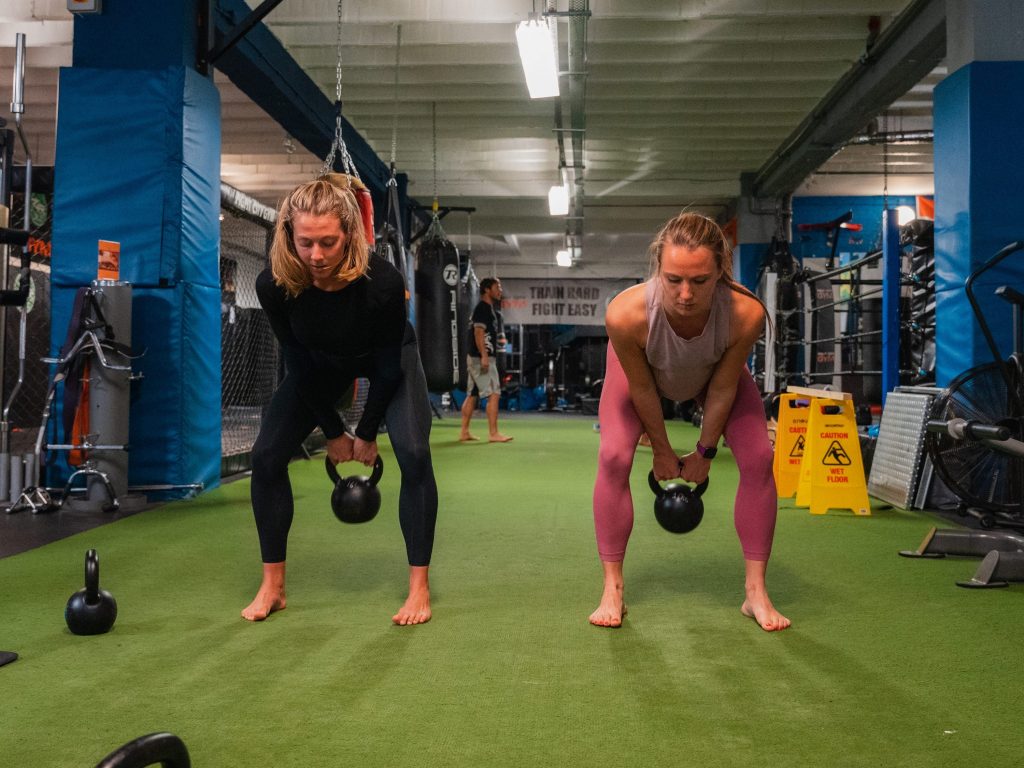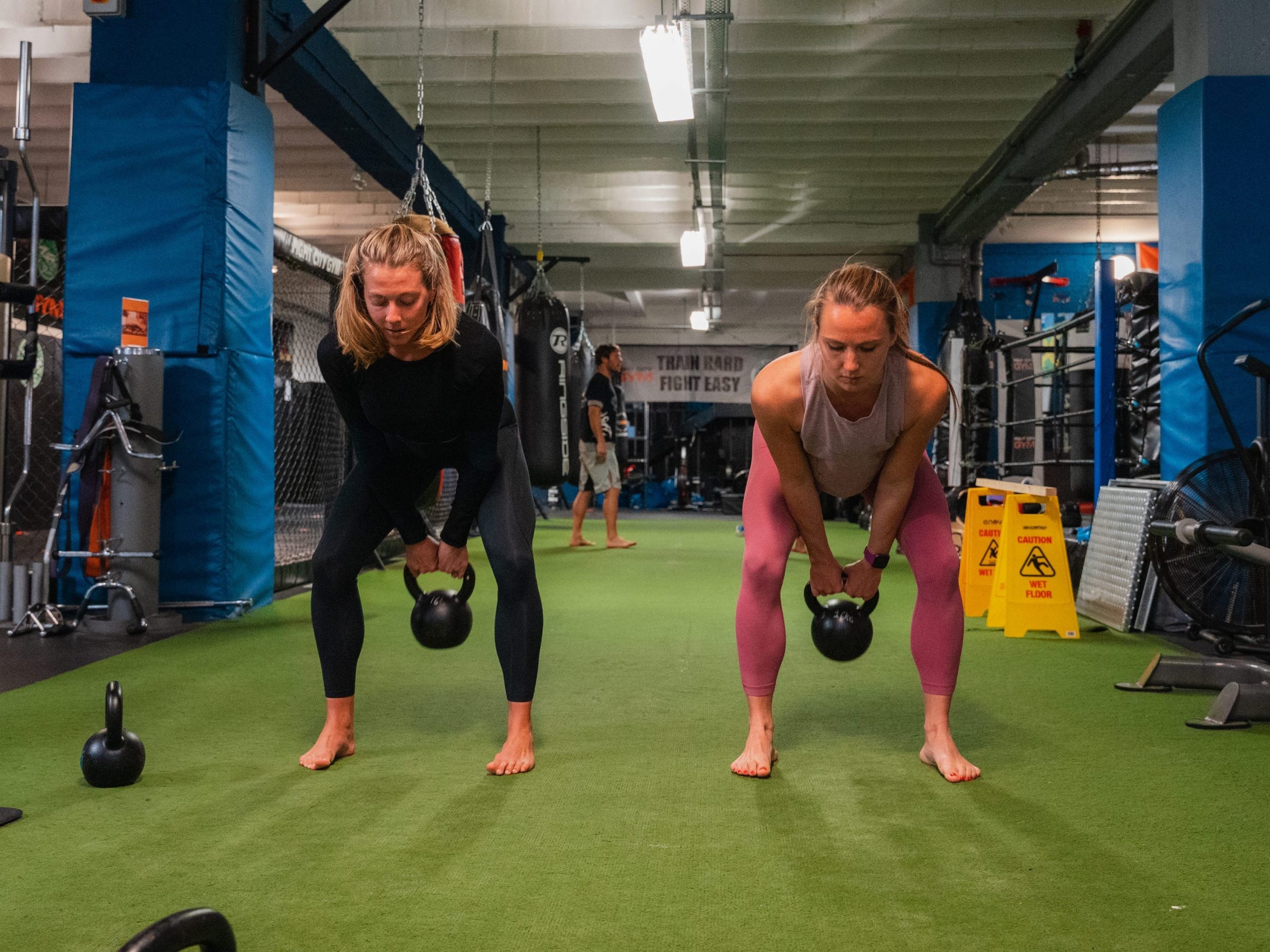
William Smith
- Kettlebells are "unconventional tools," and they work differently than dumbbells, Jay and Steph Rose told Insider.
- I trained with the kettlebell experts and was shocked to learn I'd been using the weights all wrong.
- Many people make the same mistakes, but with the right technique you can engage more muscles for better results.
- Visit Insider's homepage for more stories.
Kettlebells are popular weights both in the gym and for at home workouts. However, most people are using them incorrectly, movement specialists Jay and Steph Rose of Phase SiX told Insider.
Because of their design, using kettlebells incorrectly can lead to injury. Wrist pain or bruising is a popular complaint, but according to the Roses, if used correctly, the weight shouldn't bruise your wrist at all.
Steph explained kettlebells work by pulling the wrist in a downward motion, and it requires strength to pull the weight back up against gravity.
Exercising with a kettlebell also requires full-body engagement, which is why the Roses think it's superior to using conventional weights.
The top exercises the Roses recommend are the kettlebell swing, goblet squat, clean and snatch, and Turkish get-up.
I thought I knew how to perform all these exercises correctly, but I quickly realized kettlebells require a different approach.
Kettlebell swing
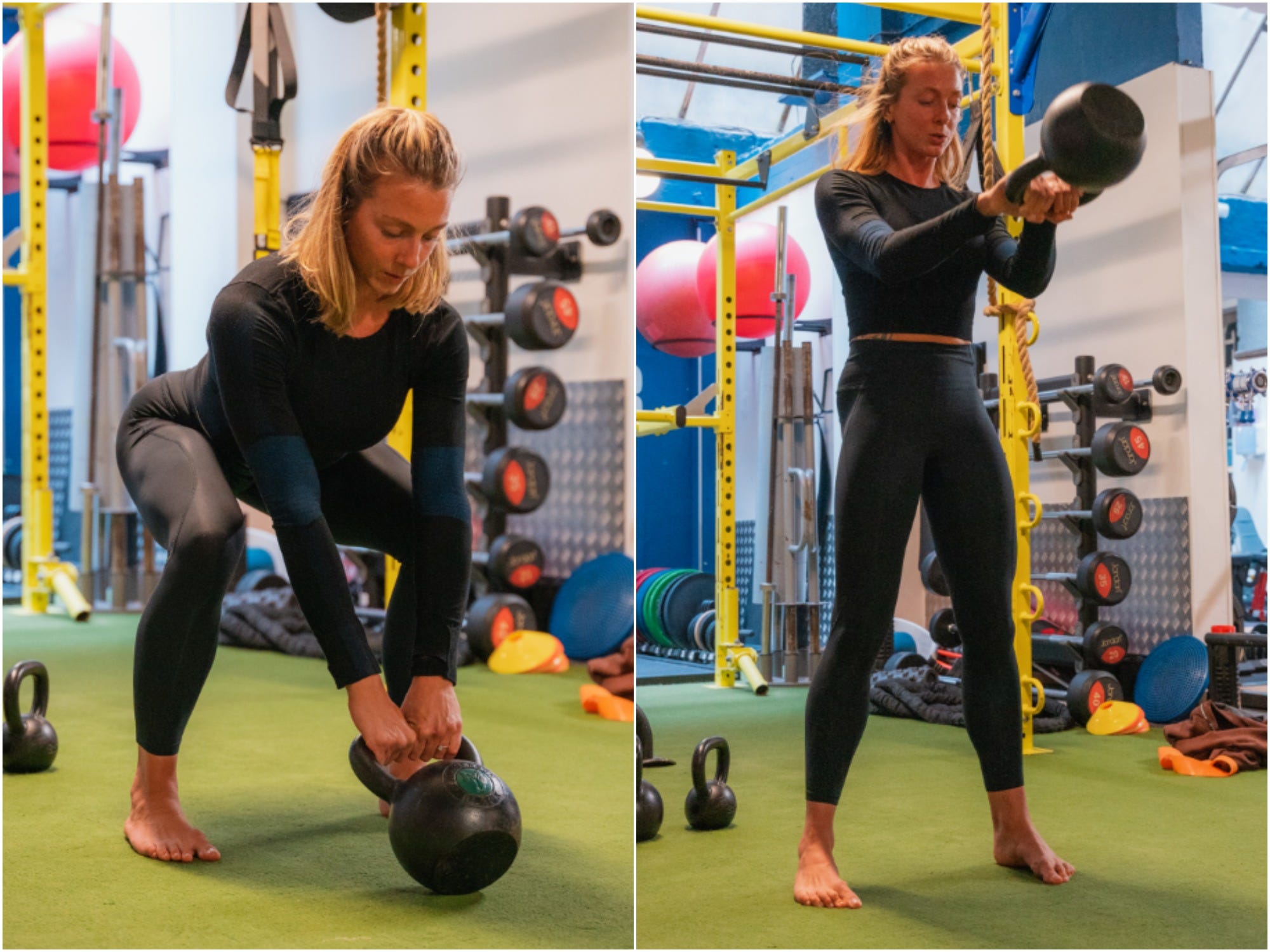
William Smith
To do a kettlebell swing, start in a "Silverback stance," as the Roses call it, with the kettlebell tilted in front of you - drop your hips back, roll your shoulder-blades down, and keep your chest up.
Don't grip the kettlebell too tightly (have your thumbs over your fingers to avoid tears), and think about spreading the ground apart with your feet to create lower body tension.
Remember the movement is a hinge, not a squat, and you need to focus on performing a pelvic tuck rather than just an extension - this engages more muscles in the body. The power comes from driving through the hips, but avoid arching your back.
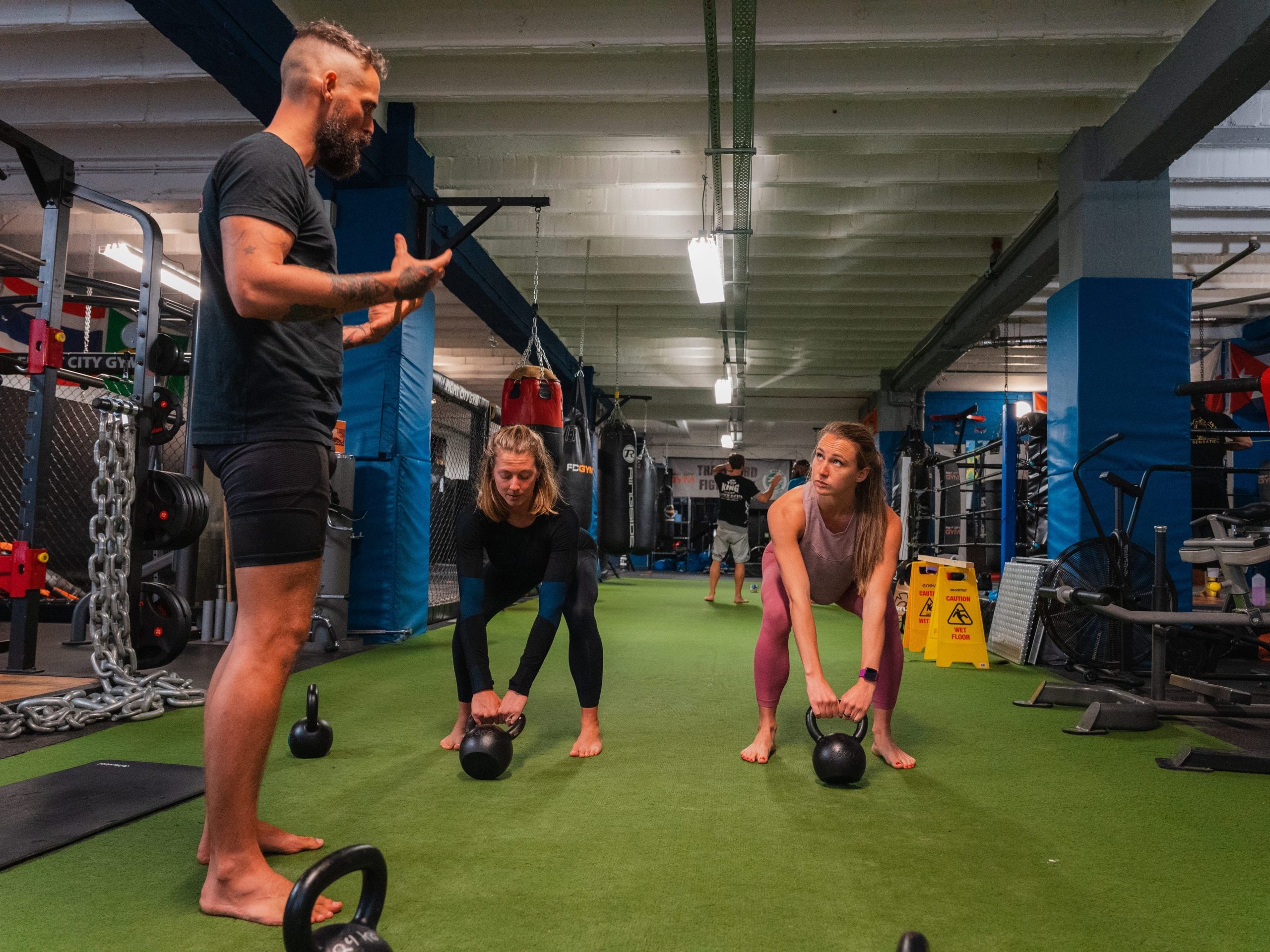
William Smith
You don't need to fully extend your arms at the top of the swing, because the movement isn't an arm raise, but the weight shouldn't go higher than chest height.
When you finish your swings, control the kettlebell back down to your start position.
Kettlebell clean

William Smith
To perform a kettlebell clean, your set-up position is similar to that of a swing (the "silverback" stance again), except you're only using one hand to hold the weight. The kettlebell should be angled inwards.
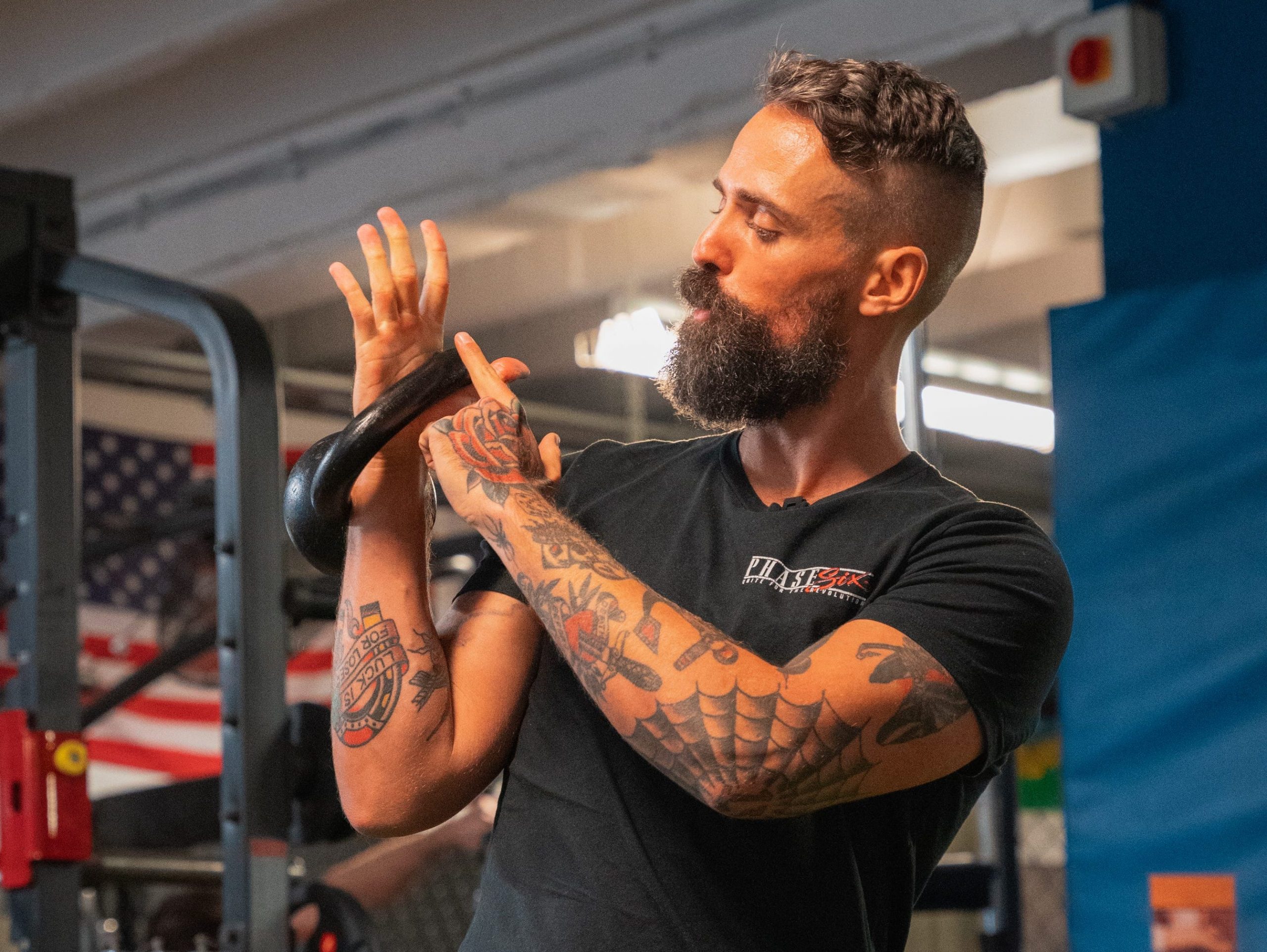
William Smith
Where most people go wrong when cleaning a kettlebell, I learned, is they grip the handle too tightly, so instead of letting the weight rotate, they flip it and it bashes their wrist.
To clean the kettlebell, engage the lower body, push through the floor, and think about the kettlebell rotating like a corkscrew into the rack position.
At the top of the movement, hold the kettlebell slightly away from the body to keep everything engaged, rather than resting.
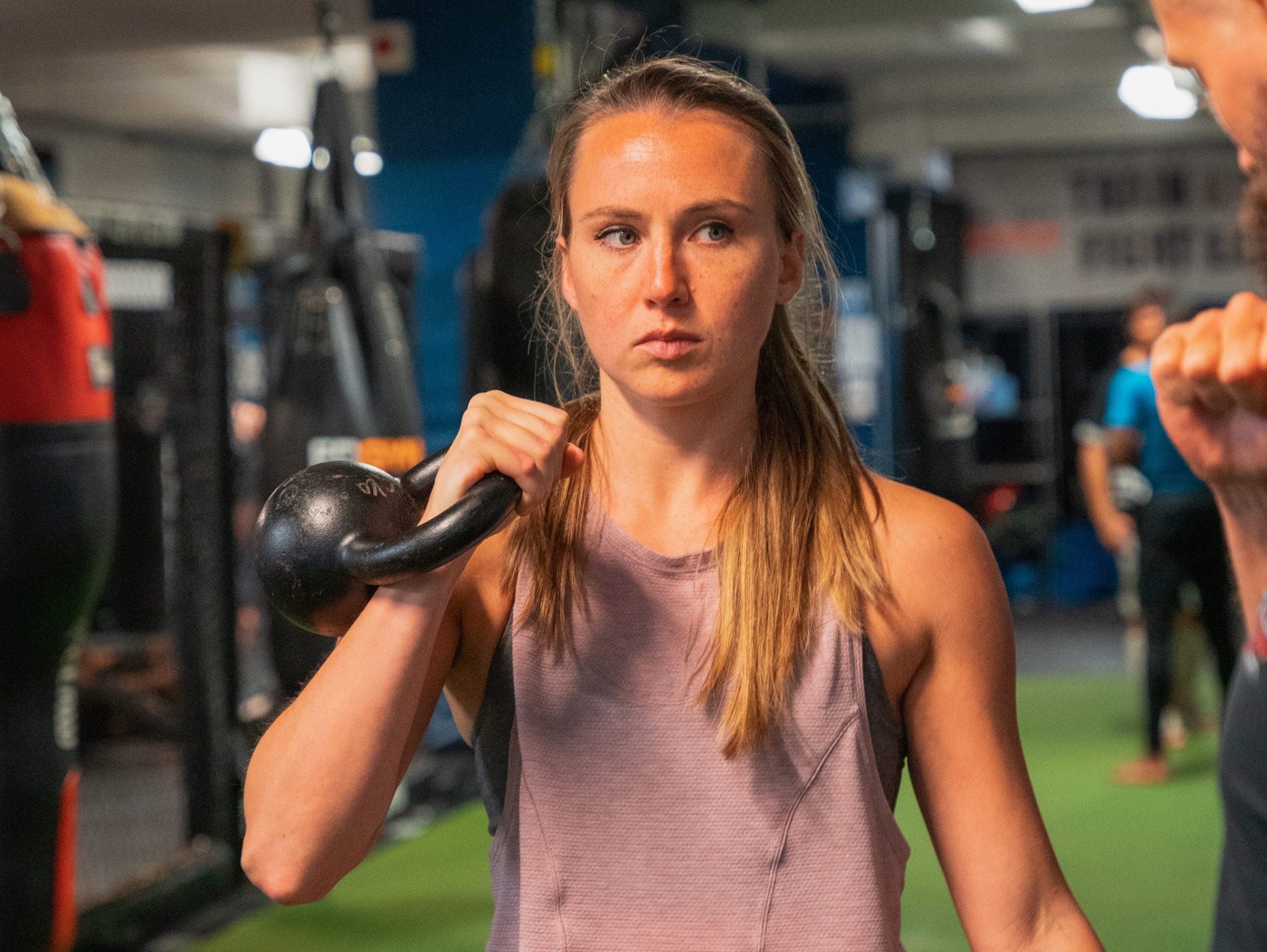
William Smith
The wrist should be straight or slightly flexed inwards (as if you're about to punch yourself), but never bent backwards, the Roses said. And the wrist should never be outside your elbow either.
You return to the start position in the same way, unraveling the kettlebell down.
Overhead kettlebell position
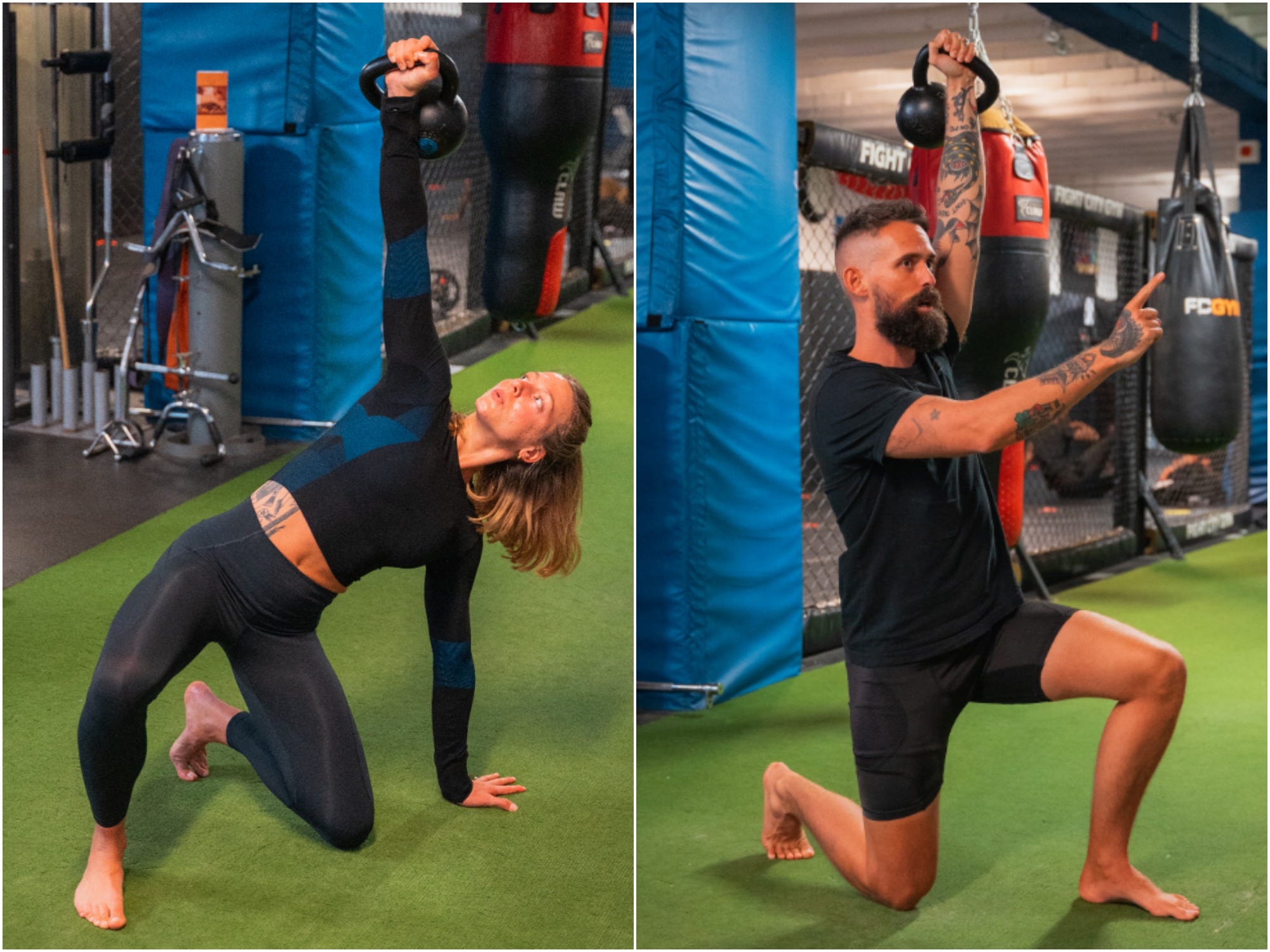
William Smith
The overhead kettlebell position is used in a variety of movements, such as Turkish get-ups and snatches.
Again, position the kettlebell at a 45-degree angle across your palm.
One of the most common mistakes the Roses see people doing is bending the wrist while holding the kettlebell overhead. Keeping the wrist straight reduces injury risk and engages more muscles in the arm.
Your shoulder should be down, core engaged, and your arm should be locked out.
"You have to be completely engaged because of the way it's balanced. Your legs are screwed into the ground, which causes the glues to activate, and then your whole posterior chain and anterior is all active," Jay said.

